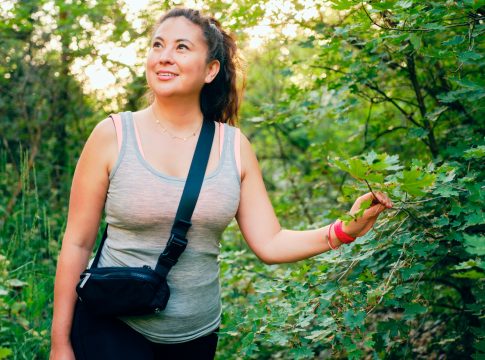The Healing Power of Forest Bathing: A Journey into Nature’s Embrace
As a health and wellness communicator, I often find myself navigating a landscape filled with trends that promise transformation. While many of these experiences can be beneficial, some feel fleeting or overpriced. Skeptical yet curious, I recently had the opportunity to participate in a forest bathing session, inviting me to explore the depths of nature’s soothing embrace.
What Is Forest Bathing?
Often referred to as shinrin-yoku, forest bathing is a practice that originates from Japan. It involves immersing oneself in nature with intention, but it doesn’t require a literal bath in water. Rather, it’s about experiencing the sights, sounds, and sensations of a forest, offering a therapeutic respite especially for those entwined in the hustle and bustle of city living.
Dr. Suzanne Hackenmiller, chief medical advisor at AllTrails, describes forest bathing as a path to achieving a calmer mental and physical state. It can involve slow walks, sitting, or even lying down in a natural setting—all aimed at fostering mindfulness and connection with the environment.
The Science Behind It
Research supports the numerous benefits of forest bathing. A meta-analysis of various studies highlights that spending time in nature can significantly lower cortisol levels, thereby reducing stress. Another significant study conducted in the UK found that individuals who spent at least 120 minutes weekly in nature reported improved health and well-being.
Dr. Hackenmiller emphasizes that forest bathing activates the parasympathetic nervous system, which governs our rest and relaxation responses. This activation can lower blood pressure, heart rate, and stress hormones, creating a holistic sense of well-being.
My Experience with Forest Bathing
During my first forest bathing session, we gathered in the lush surroundings of the Welsh Wye Valley. We engaged in a unique activity of lying down on the forest floor for ten minutes, eyes open, soaking in the peaceful vibes of nature. Despite my initial reservations about boredom, the experience was surprisingly engaging. Observing the intricate shapes of leaves and listening to birdsong quieted my racing thoughts and allowed relaxation to wash over me.
Upon concluding the session, I felt an unexpected sense of rejuvenation. As I lay surrounded by nature’s beauty, I realized that forest bathing is an accessible practice that can easily integrate into daily life. Whether it’s lying in a local park or simply stepping outside without headphones during walks, the benefits are readily available.
Is Forest Bathing Worth It?
Absolutely. Most studies indicate that the positive effects of nature on our mood can be felt within minutes. According to a recent AllTrails survey, over 55% of respondents noted emotional uplift as their primary motivation for spending time outdoors.
Dr. Hackenmiller passionately asserts that anyone can find solace in forest bathing. It may seem remarkable that such a simple act can yield profound benefits, yet nature has a way of nurturing our inner selves.
How to Get Started
- Choose Your Location: Seek out a local park, wooded area, or natural space.
- Set Aside Time: Aim for just 5-10 minutes at first; create moments of stillness.
- Be Mindful: Focus on the sensations around you—take in the colors, sounds, and textures of nature.
- Practice Regularly: Make forest bathing part of your routine, as consistency enhances its calming effects.
In our ever-accelerating world, reconnecting with the natural environment offers a powerful reminder of the simple yet effective ways we can nurture our mental well-being. The journey into nature can be a transformative experience—one that encourages us to pause, breathe, and heal.

Covers wellness, nutrition, mental health, and daily life tips.
Bio: Talia brings a background in health journalism and holistic living to help readers live better, one tip at a time.

